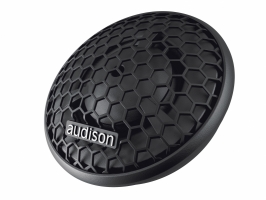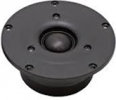
One has to go back to the 1950's to find the first domestic applications of a specific speaker designed to separate delicate high frequencies away from the more brutal low frequencies in an audio system. In those early days a tweeter was to all intents and purposes simply a small speaker of traditional design incorporating a magnet, a voice coil and a cardboard cone, which would reproduce frequencies from 2kHz (2000Hz) up to around 15kHz. As with all periods in history and product development there were those which, became legendary for their comparative performance and these, as is so often the case, continue to provide a retro-fascination for some music fans seeking a nostalgic audio experience.
In the 70's and 80's, audiophiles wanted more from their tweeters and particularly with the introduction of the compact disc. Listeners wanted to recreate the entire audio spectrum all the way up to 20,000Hz, the scientifically accepted upper limit of human hearing. In order to achieve this, the dome tweeter was born. This shared many attributes of the cone tweeter however, rather than a concave cone, a far faster moving and much smaller convex dome manufactured from silk or synthetic soft material or aluminium and even titanium was developed in the pursuit of a higher reach and more linear response. The dome suited car audio better than its almost extinct cone tweeter as the dispersion characteristic was much better. However, some car manufacturers still fit highly directional cone tweeters, why? because they are cheap! Unfortunately, cheap ones are also mostly very nasty!
But it is not only variation in cone and dome material that have changed since the pioneering days of tweeter technology. Many other attributes have been enhanced with the introduction of new and sometimes more exotic materials. One of the main objectives has been to improve the efficiency of tweeters. The efficiency is the deciding attribute in how much power you need to drive the speaker. The more power required, the more powerful the amplifier has to be and the more attention has to be paid to keeping the temperature of the coil and all moving parts stable. As mentioned before, high frequencies are by nature more delicate than low frequencies and so the less physical resistance in the mechanics of the tweeter, the more linear the resulting sound will be.
To read the full article and learn more about tweeter design, acoustic lenses, ferro-fluid cooling, Kapton formers etc. read Driving Sounds Magazine Issue V due out in April...


